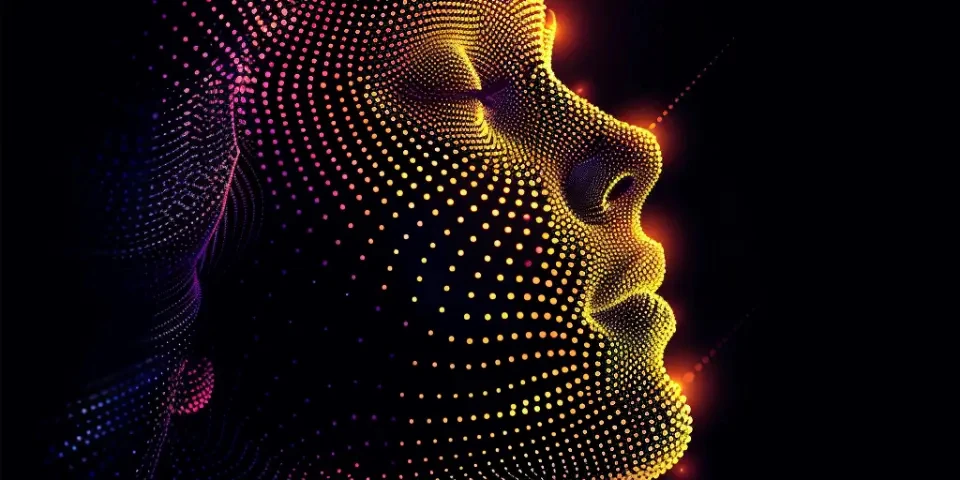Empowering Creativity AI's Role in Art and Design
Art and design have always been outlets for human creativity and self-expression. The advent of artificial intelligence (AI) has not only revolutionized various industries but also played a significant role in empowering creativity in art and design. With the ability to analyze vast amounts of data, generate new ideas, and enhance artistic processes, AI has become an invaluable tool for artists and designers. In this article, we will explore the various aspects in which AI has contributed to empowering creativity in art and design.
1. Enhancing Traditional Art Techniques
AI-powered tools, such as deep learning algorithms, have been used to analyze and understand traditional art techniques. Through this analysis, AI can generate digital brushes and textures that mimic the style of renowned artists, enabling artists to create digitally in a manner reminiscent of traditional art forms.

Furthermore, AI can also augment traditional artistic techniques, providing real-time feedback and suggestions to artists. For instance, software like Procreate and Adobe Photoshop use AI algorithms to detect potential errors or inconsistencies in an artist's work, offering guidance to improve the overall composition or color balance.
2. Generating New Artistic Styles
AI algorithms have the ability to learn from an extensive collection of artwork and generate entirely new artistic styles. By understanding the underlying patterns and principles of various art genres, AI can synthesize unique compositions and visuals that push the boundaries of traditional art.
Tools like DeepArt.io and Prisma use AI algorithms to transform ordinary images into stunning pieces of art, emulating the style of renowned painters like Van Gogh or Picasso. This not only provides an avenue for artistic exploration but also allows individuals without traditional artistic skills to create visually captivating artwork.
3. Assisting in Design and Layout
AI has also become an invaluable tool for designers, assisting in various aspects of the design process. Design software, like Adobe Illustrator and Canva, utilize AI to suggest layout options based on the content provided by the designer.
Additionally, AI algorithms can analyze user preferences and automatically generate personalized designs. This is particularly useful in fields like graphic design and web development, where creating customizable templates based on user preferences can drastically reduce design time and effort.
4. Enhancing Collaboration and Accessibility
AI-powered collaboration tools, such as Miro and Figma, enable artists and designers to work collaboratively on projects, regardless of their physical location. These tools provide real-time collaboration features, allowing multiple artists to contribute to the same artwork or design simultaneously.
Furthermore, AI algorithms can also enhance accessibility in art and design. For individuals with physical disabilities, tools like Eye-tracking technology coupled with AI algorithms can enable them to create art or designs using only their eye movements, revolutionizing the accessibility of creative expression.
5. Automating Repetitive Tasks
AI technology can automate repetitive tasks, freeing up artists and designers to focus on more creative endeavors. Repetitive tasks such as resizing images, color correction, or creating mockups can be automated using AI-powered software.
For example, the software Content-Aware Fill in Adobe Photoshop uses AI algorithms to intelligently fill in gaps or remove unwanted elements from an image. This not only saves time but also allows artists to allocate their resources to more artistic and innovative aspects of their work.
FAQs:
Q: Can AI completely replace traditional art techniques?
A: While AI has the potential to mimic traditional art styles, it cannot completely replace the human element of creativity and emotion that traditional art techniques offer. AI should be seen as a tool that assists artists rather than a complete substitute for their skills and vision.
Q: Is there a risk of AI algorithms creating art that lacks originality and creativity?
A: Critics argue that AI-generated art lacks the authentic human touch and originality. However, AI algorithms can provide artists with new inspirations and possibilities, acting as a source of inspiration rather than replacing the artist's inherent creativity.
References:
1. McCosker, A., Wilken, R., & Forgasz, H. (2019). AI in the arts. Springer.
2. McCormack, J., Flanagan, G., & Latorre, J. (2019). Machine learning approaches to support creative practice in human and machine collaboration. ACM Transactions on Computer-Human Interaction (TOCHI), 26(6), 1-32.
3. Dhar, V. (2020). Artificial Intelligence and the Future of Work and Organizations. Academy of Management Discoveries, 6(2), 336-338.
Explore your companion in WeMate